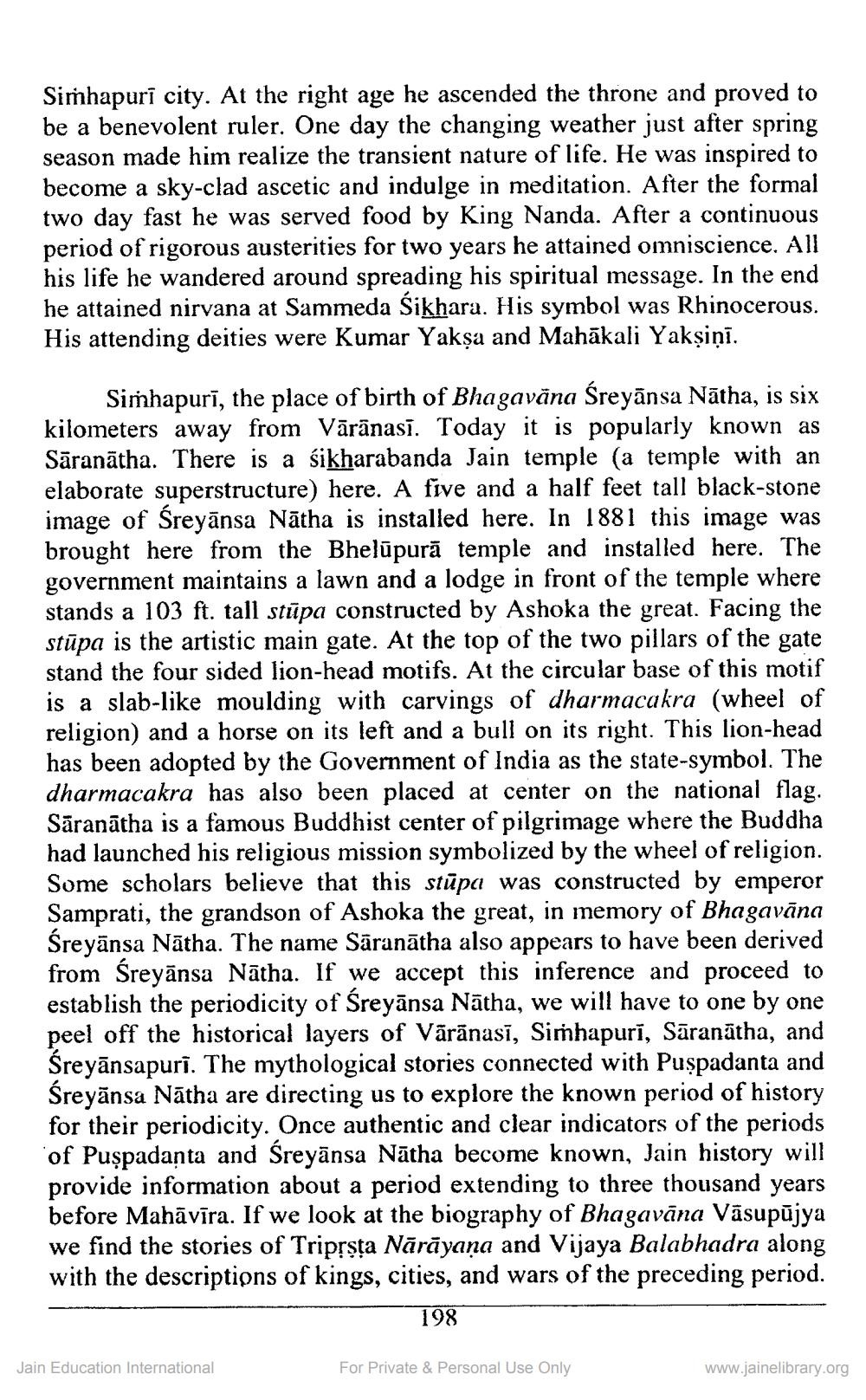________________
Simhapurī city. At the right age he ascended the throne and proved to be a benevolent ruler. One day the changing weather just after spring season made him realize the transient nature of life. He was inspired to become a sky-clad ascetic and indulge in meditation. After the formal two day fast he was served food by King Nanda. After a continuous period of rigorous austerities for two years he attained omniscience. All his life he wandered around spreading his spiritual message. In the end he attained nirvana at Sammeda Sikhara. His symbol was Rhinocerous. His attending deities were Kumar Yakșa and Mahākali Yakṣiṇī.
Simhapurī, the place of birth of Bhagavāna Śreyānsa Nātha, is six kilometers away from Vārānasī. Today it is popularly known as Sāranātha. There is a sikharabanda Jain temple (a temple with an elaborate superstructure) here. A five and a half feet tall black-stone image of Śreyānsa Nātha is installed here. In 1881 this image was brought here from the Bhelūpurā temple and installed here. The government maintains a lawn and a lodge in front of the temple where stands a 103 ft. tall stūpa constructed by Ashoka the great. Facing the stūpa is the artistic main gate. At the top of the two pillars of the gate stand the four sided lion-head motifs. At the circular base of this motif is a slab-like moulding with carvings of dharmacakra (wheel of religion) and a horse on its left and a bull on its right. This lion-head has been adopted by the Government of India as the state-symbol. The dharmacakra has also been placed at center on the national flag. Sāranātha is a famous Buddhist center of pilgrimage where the Buddha had launched his religious mission symbolized by the wheel of religion. Some scholars believe that this stūpa was constructed by emperor Samprati, the grandson of Ashoka the great, in memory of Bhagavāna Śreyānsa Nātha. The name Sāranātha also appears to have been derived from Śreyānsa Nātha. If we accept this inference and proceed to establish the periodicity of Śreyānsa Nātha, we will have to one by one peel off the historical layers of Vārānasī, Simhapurī, Sāranātha, and Śreyānsapuri. The mythological stories connected with Puşpadanta and Śreyānsa Nātha are directing us to explore the known period of history for their periodicity. Once authentic and clear indicators of the periods of Puşpadanta and Sreyānsa Nātha become known, Jain history will provide information about a period extending to three thousand years before Mahāvīra. If we look at the biography of Bhagavāna Väsupūjya we find the stories of Triprsta Nārāyaṇa and Vijaya Balabhadra along with the descriptions of kings, cities, and wars of the preceding period.
198
Jain Education International
For Private & Personal Use Only
www.jainelibrary.org




